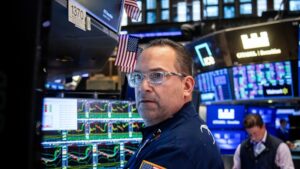
Russia is gearing up to significantly increase its production of rare earth elements, aiming to carve out a substantial role in the global market. However, analysts caution that the country faces numerous challenges as it attempts to catch up with established players like China. Last week, Russian President Vladimir Putin directed officials to develop a comprehensive road map by December 1 for the long-term extraction and production of rare and rare earth metals.
This announcement comes as Moscow lags behind its peers in exploiting its rare earth deposits, which are crucial for manufacturing high-strength magnets used in high-tech and energy industries, including consumer electronics, electric vehicles, and wind turbines. The global race for rare earths is intensifying, with China’s dominance creating geopolitical tensions and supply chain vulnerabilities.
Global Rare Earth Landscape
The United States Geological Survey (USGS) estimates that there are 110 million tonnes of rare earth deposits worldwide. China leads with 44 million tonnes, followed by Brazil, India, and Australia. Myanmar, a significant supplier to China, also holds considerable reserves, though the exact amount remains unknown.
Despite trailing behind major producers, Russia is believed to possess the fifth-largest known reserves, totaling 3.8 million tonnes, according to the USGS. This places Russia above the United States, which has 1.9 million tonnes.
Russia’s Ambitions and Challenges
Currently, Russia’s domestic production of rare earths is minimal, accounting for only 2,500 metric tons or 0.64% of global production in 2024. With demand for rare earths soaring, particularly from the U.S., due to growing supply chain concerns, Moscow is eager to capitalize on its natural resources.
These concerns were highlighted when China imposed restrictions on rare earth exports in response to U.S. trade tariffs. Although a temporary reprieve was reached between U.S. President Donald Trump and Chinese President Xi Jinping, the incident underscored the strategic importance of diversifying supply sources.
“Russia has a very long history, much like China, of extracting rare metals, so this is something that they have done for a long time, but I think their scramble [to increase rare earths extraction and production] now puts them in a different position. The U.S. is scrambling for a need. Russians are scrambling for an opportunity,” said Willis Thomas, principal consultant at CRU Group.
Strategic Partnerships and Geopolitical Considerations
Putin has expressed a willingness to collaborate with foreign partners on joint projects to extract and process Russia’s rare earth metals. This move is seen as an attempt to attract the interest of the White House, especially as Trump has sought deals to access rare earth deposits in regions like Ukraine and Greenland.
However, questions remain about the quality and quantity of Russia’s rare earth reserves. Analysts suggest that Moscow may keep this information closely guarded, releasing data only when necessary to raise capital.
“It’s a little bit opaque, but from what we know on the sort of stated reserves, they tend to be a little bit lower quality. I think there are probably ones [reserves] that we don’t know about, that are known in Russia, and probably ones that no one knows about,” CRU’s Thomas added.
East or West: Russia’s Potential Partners
A crucial question is whether Russia will turn to China for business, given Beijing’s search for raw rare earth materials, or whether it will seek partnerships with Western countries, particularly the U.S. China’s dominance in processing and separation of rare earths presents an attractive opportunity for Russia to integrate into its supply chain.
Yet, the strained relations between Trump and Putin, exacerbated by the ongoing conflict in Ukraine, may complicate potential collaborations with the U.S. Trump has emphasized the importance of securing critical minerals, hosting Central Asian leaders to discuss broadening supply chains.
“Because there is a war in Ukraine, there is a possibility that Western governments and the risk consumers themselves will not be willing to buy from Russia … and that Russia will not be able to take any benefit of the momentum that is building up in the West on the supply chain,” said Piyush Goel, a critical metals analyst at CRU.
Future Prospects and Strategic Implications
As Russia prepares its road map for rare earth production, it remains to be seen how the country will navigate its geopolitical landscape and leverage its resources. While aligning with China’s well-established processing capabilities might offer immediate benefits, the long-term strategy could involve diversifying partnerships to mitigate risks associated with geopolitical tensions.
Ultimately, Russia’s entry into the rare earths market could reshape global supply dynamics, especially if it successfully taps into its vast reserves and establishes robust processing infrastructure. As the world continues to grapple with supply chain vulnerabilities, Russia’s strategic positioning could prove pivotal in the evolving landscape of critical minerals.






